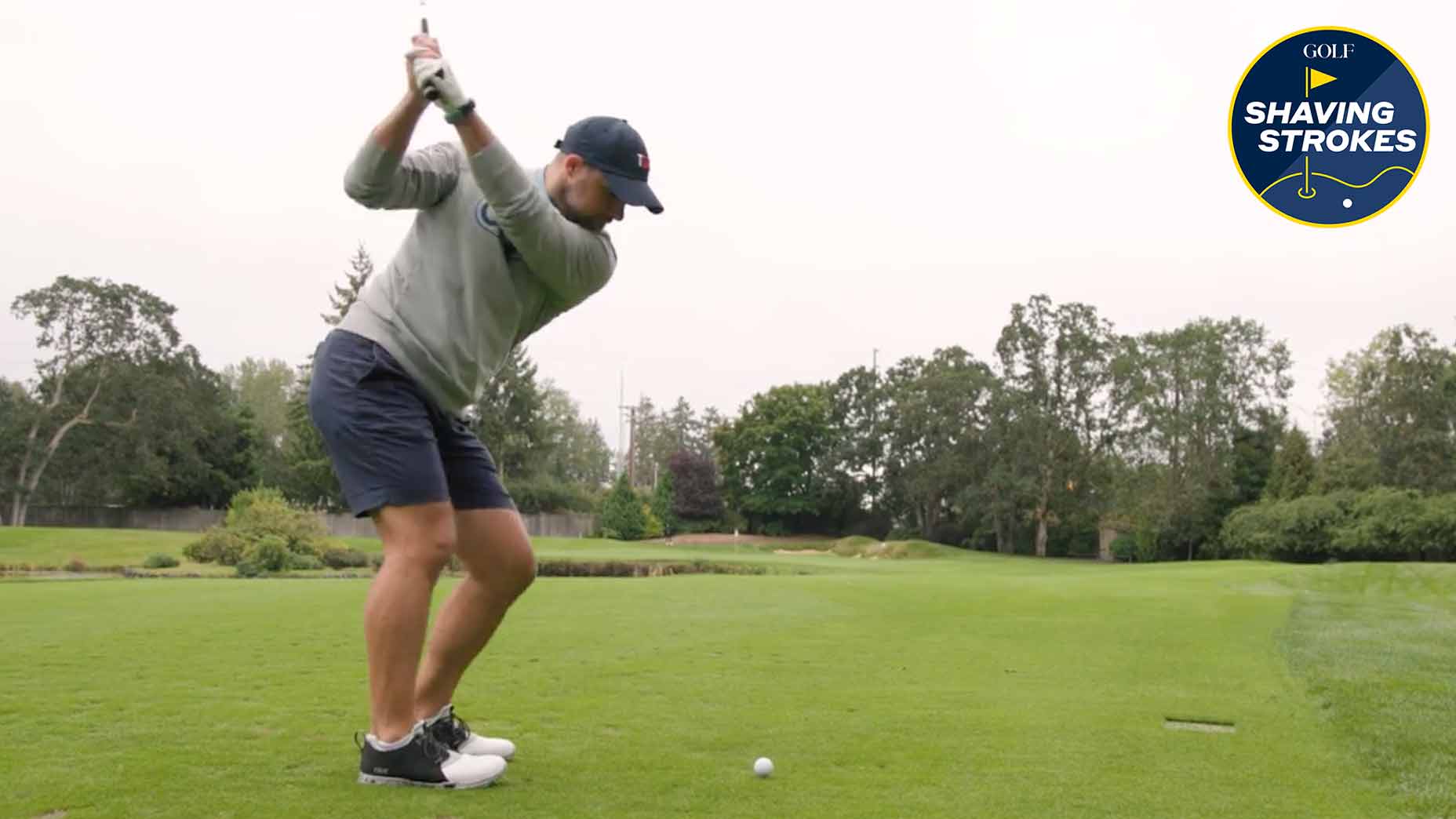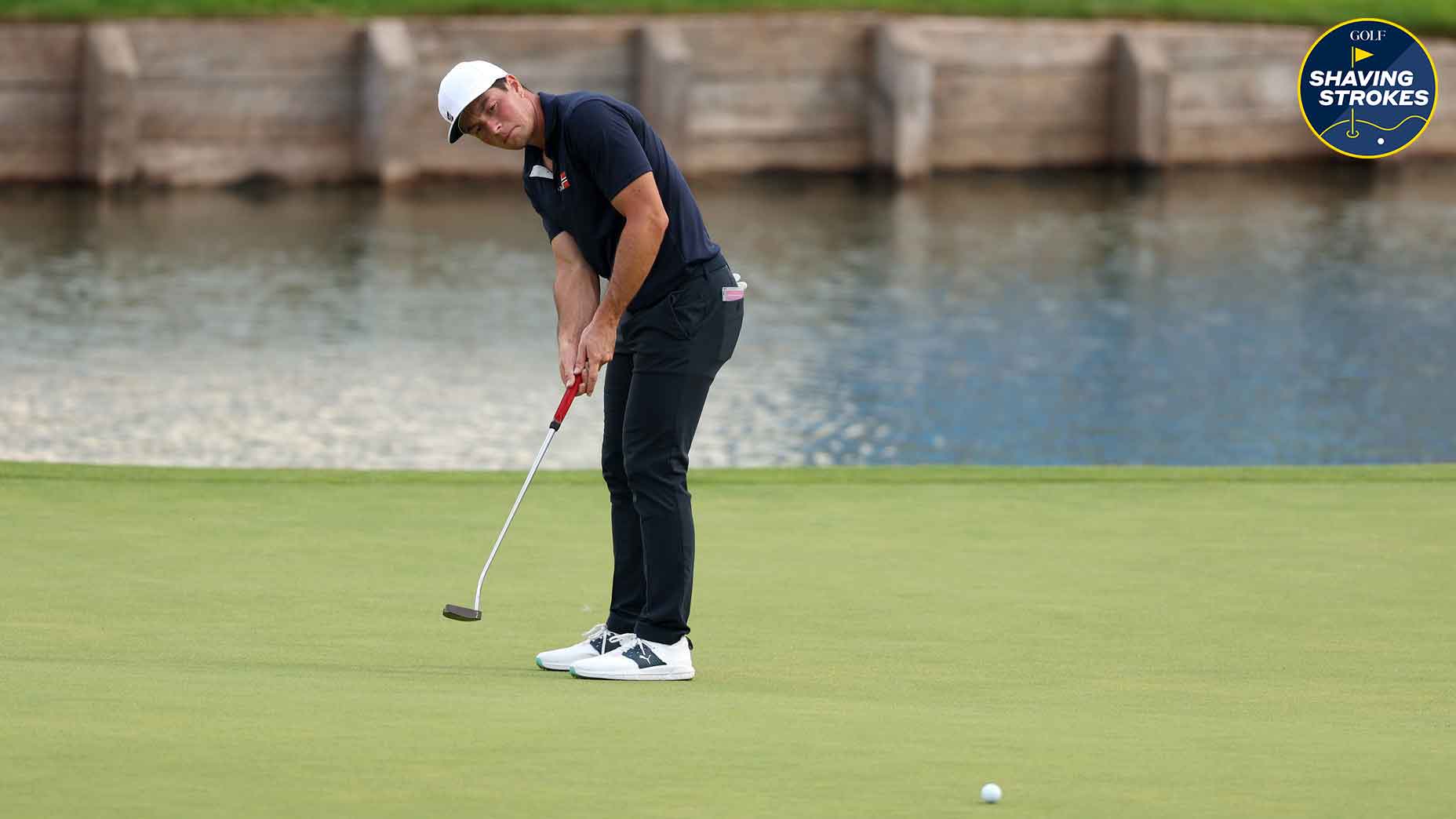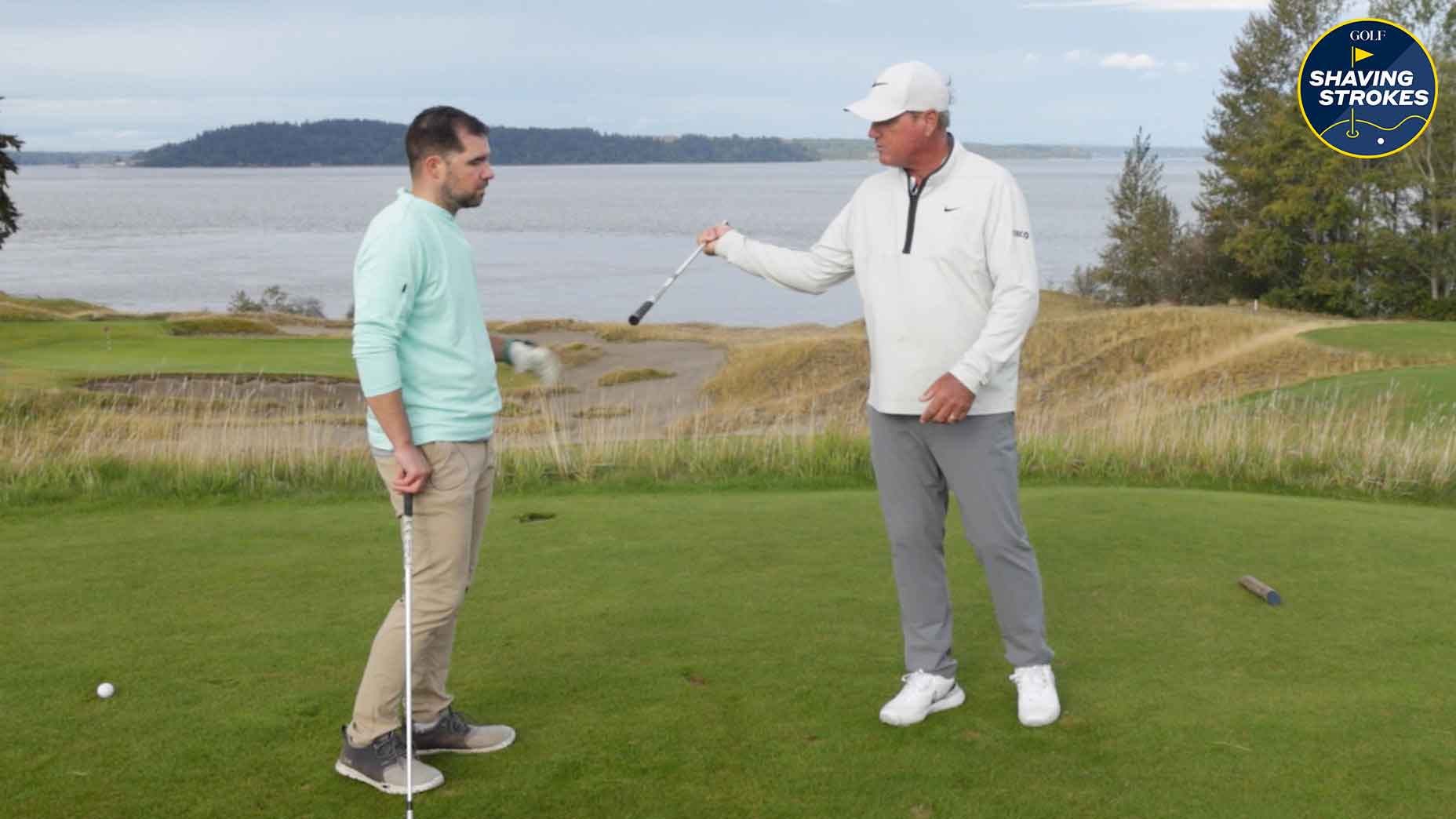Making a swing change? These are 4 things you need to know
- Share on Facebook
- Share on Twitter
- Share by Email

Completely making a swing change takes work (and patience), so here's what to know before doing it.
Getty Images
Welcome to Shaving Strokes, a new GOLF.com series in which we’re sharing improvements, learnings and takeaways from amateur golfers just like you — including some of the speed bumps and challenges they faced along the way.
Over the past half-year or so, I’ve talked about completely reworking my golf swing, going from a short, snap-like motion, to a much more complete sequence that’s helping me stay on plane and connecting with the sweet spot more frequently.
The process has been grueling at times, as bad habits are hard to quit, but in the end, I’m starting to improve my ball-striking and experience much better results.
Correcting your golf swing might be easy to do on paper, but it takes more work than you might think.
I dropped 4 strokes simply by better understanding my abilityBy: Nick Dimengo
You’ve got to find a trusted swing coach who can provide the required feedback, as well as actually practice what said teacher is preaching — which can be a struggle for the common golfer who doesn’t always spend lots of time working on their game.
But with the help of GOLF Top 100 Teacher Tim Cooke, you can better understand the process of making a swing change, as well as the four things every amateur should know before deciding to do so. Take a look below at Cooke’s tips!
4 things to know when making a swing change
A new golf season is upon us, meaning it’s a common time for amateurs to make swing changes before playing lots of rounds this year.
But before upgrading your swing pattern, you’ll want to keep these four things in mind — which will help you make any adjustments efficiently.
1. Make a plan for your practice sessions
Group your golf balls in pods of five. For each group of five, have a specific objective related to your swing change, only focusing on that one objective no matter how well (or poorly), you hit a shot.
After hitting those five balls, take a short break and hit one ball with a different club — but make it a completely different shot type; such as a pitch. Then gather five more balls and return your focus to the original objective.
By following this pattern, you’ll create spacing between sets, which forces you to recall and refocus on the main objective and help amplify the learning.
2. Hit balls off-speed
During some of your five ball sets, hit a few of them at 50% speed.
Every pro I work with immediately starts hitting off-speed shots when we’re making a swing change — and most of the time, I don’t have to ask them to! They just hit some this way to magnify their awareness of the movement, then gradually build up the speed as they get more comfortable.
3. How intense is your focus?
So many amateurs think they can make a full swing change by crushing 150 balls at the range with their driver. Sorry to deliver bad news, but this isn’t going to happen — especially if your focus isn’t all there.
If you’re trying to change your swing motion with the driver, you need to ask yourself how intense your focus needs to be so you can actually adjust the swing.
For example, on a scale of 1-10, if a “1” is your focus with no effort to change, and you’re not pushing yourself with the highest intensity, you’re not doing anything but going through the motions.
Your focus becomes your reality, so be all in!
4. Take practice swings with awareness of your feel
Whether you’re at the range or at home, take rehearsal swings that helps both your mind and body feel the swing change that you’re trying to make.
Where can you feel the difference in your body when you make those practice swings? Make mental notes (or write down actual notes) that can help you apply these changes when you go practice hitting golf balls.

Rukket Sports Pathfinder Impact Mat™
$69.99
View Product
Latest In Instruction

Golf.com Photographer

Nick Dimengo
Golf.com Editor










